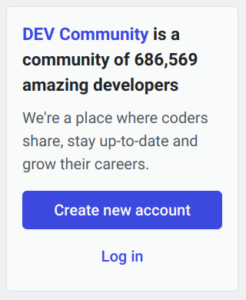
Note: This post was written by Bonnie Azoulay Elmann of full-service content marketing agency World of Mouth.
Like any type of consumer, technical audiences consume content marketing in the form of videos, blog posts, and ebooks. They look for sources that are helpful, educational, and authoritative.

Karl Hughes (photo via Twitter)
When they think of content marketing, the first thing that comes to mind is “fluff.” But, when done right, there’s no reason why content marketing for a technical audience can’t be substantive and trustworthy.
Recently, Karl Hughes (@KarlLHughes), Founder at DRAFT.DEV presented at the Bay Area Content Marketing Meetup on how to reach a technical audience with content marketing.
How to come up with content ideas
Karl first covered how to come up with content ideas for a technical audience.
Keyword audits

Visit Google Keyword Planner or another keyword audit tool that displays popular technical topics that people are searching for. You’ll want to find high volume and low competition keywords.
Even though lots of people are searching for those keywords, you’ll still have a chance of becoming searchable on Google since not many competitor sites are writing about that topic.
This is a great way to find top-of-funnel, beginner-level content and build your Domain Authority. Since these keywords mostly attract junior-level developers who may not be able to make purchase decisions, this content won’t translate dollars into sales.
Community and team input
Go to Stack Overflow, Reddit, Hacker News, GitHub, or another site where people are asking technical questions. Listen to these users’ problems and write content that solves those problems. You can even post your blog posts on these sites to gain more traffic.
This is a great way to find hidden gems and social trends. However, you won’t necessarily be targeting high-volume keywords.
Sales team and documentation
Talk to your sales team about the problems users have been experiencing. If users are getting stuck at a certain point in the process, then this is a good opportunity to write a blog post. Your actual customers are asking these questions, which can help you make the sale.
By creating bottom-of-funnel content, you’re getting people right when they’re ready to make a purchase. However, the keywords you’re using can be low in volume and not target people who are unfamiliar with your content.
The best content strategy is to blend these three ideas and understand where you need bottom or top-of-funnel content.
Find subject matter experts to write for you
Next, Karl spoke about how he finds subject matter experts. Upwork and Fiverr don’t typically work because it’s hard to find and keep high quality writers. Here’s what might work instead:
Hire technical writers
It would be great if your in-house engineers can write a blog post a month, but that’s not always realistic. If you have the budget, then you can hire technical writers to write about the specific topics you’re looking to cover.
How to find writers

Go to Dev or Medium — both are publishing forums where technical writers publish content — and look for writers who have already published about the topic you’re looking to cover.
If you like their work, reach out to them about a freelancing opportunity.
Next, go to an open applications form for community writers, like GitHub’s community writers program and find companies who pay software developers to write content for them.
Weekly emails
Once you sift through applications and find your pool of writers, send out a weekly email with topics that you’re looking to be covered.
Managing and motivating creators
Once you find subject matter experts to write for you, it’s important to keep them engaged and motivated.
Use a rubric when hiring
Before bringing people on, use a rubric to evaluate the right candidates and what they have to offer. It also helps to ask them for unedited samples of their work. Don’t just look at writers’ published articles because those pieces usually involve heavy editing.
Give specific guidance
Instead of giving your writers a title and one-line description, give them a brief of what you’re looking for (e.g., the pitch, the assets delivered and an audience brief outline). Be specific about what you want in order to ensure higher-quality articles.
Invest in editing
Ideally, you’d want 60-70% of your budget allocated for the writer, while the rest is invested in editing and design. Realistically, however, it ends up being 50/50 between the writer and editor. Editing is a big part of the total cost.
Money isn’t the only motivation
Most of these technical writers are full-time developers. Some of them are doing it for the byline or opportunity to learn about a cool new product. They can also showcase their blog posts in an upcoming interview. Know that money isn’t the only motivation.
How to reach a technical audience
A technical audience can be hard to reach. Here’s how Karl does it.
Social and SEO
These technical blog posts typically perform well when they’re shared on social media. If the posts are high-quality, they’ll get shared more and attract backlinks in newsletters and on websites.
Get to know niche social sites and newsletters
Hacker News, Reddit, Stack Overflow and other sites are where your technical audience hangs out. Go find those places and figure out how to promote your content there!
Syndicate your content

DEV, DZone, Medium, and Hackernoon are all websites where you can link back to your original blog post.
Repurpose your content
YouTube, GitHub, and Twitter are all platforms where you can repurpose your blog posts in different formats. Make the most out of your content! For example, if you wrote a tutorial, publish the code in a GitHub repository.
Watch the on-demand recording
Watch the recording of Karl’s talk:
